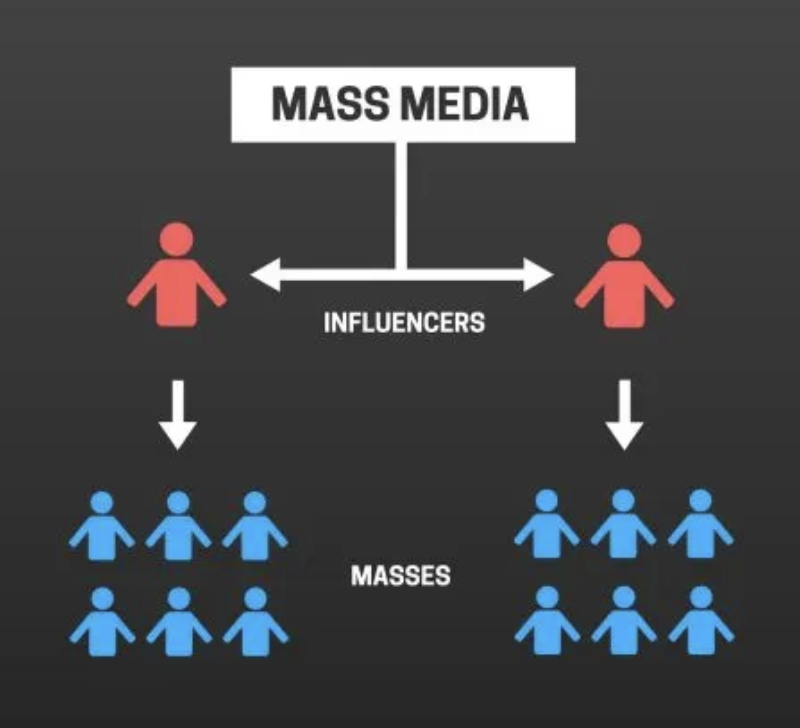The Two-Step Flow Theory is a theory of communication that explains how information and influence flow in society, particularly through mass media. It was introduced by Paul Lazarsfeld, Bernard Berelson, and Hazel Gaudet in their 1944 study “The People’s Choice”, and later expanded by Lazarsfeld.
This theory offers insight into how information and influence are transmitted. It challenged the dominant idea that mass media have a direct, powerful effect on passive audiences. Instead, it proposed that media effects are mediated by interpersonal relationships and social influence. They found out that information from mass media does not reach the general public directly, but that it flows first to a small group of individuals known as opinion leaders, who are actively engaged with media content and better informed on particular issues. These opinion leaders then interpret the information and pass it on to others in their social circles, thereby influencing attitudes, opinions, and behaviours. This process consists of two steps: from the media to the opinion leaders, and from the opinion leaders to the broader public.
Opinion leaders play a crucial role in this model. They are typically more knowledgeable and socially active, therefore respected within their communities. Because they are more exposed to media and more interested in particular topics, such as politics, fashion, or technology, they serve as intermediaries between the media and the less-informed members of society. Rather than individuals being directly influenced by media messages, they are more often influenced by the interpretations and recommendations of these opinion leaders.
Before this theory, it was assumed that media had a direct and consequential effect on a passive audience. In contrast, the Two-Step Flow model introduced the idea that interpersonal communication significantly shapes public opinion, and that media influence is indirect and filtered through social relationships.
A classic real-world example of this theory in action is seen in political campaigns. While campaign advertisements and news coverage play a role, many voters are more heavily influenced by discussions with friends, coworkers, or community leaders, people they trust and view as credible. These opinion leaders often act as gatekeepers, framing media messages in ways that resonate with their audience.
This theory is still relevant today but it has evolved. With social media, new types of opinion leaders have emerged, e.g. influencers, content creators. They influence how their followers think and feel. Therefore, it has made a change from a two-step to passing through several people before it reaches the wider public on the platforms.
In conclusion, the Two-Step Flow Theory advanced our understanding of how the media influences society. By understanding the role of opinion leaders and how interpersonal communication works, the focus from mass media’s direct effects has changed.
References
Lazarsfeld, P.F. (2018) “Preface and introduction to the second edition of ‘the People’s Choice: How the Voter Makes up his Mind in a presidential election campaign,’” Sociological Journal. Translated by M.A. Zavgorodniaya, 24(4), pp. 154–176. Available at: https://doi.org/10.19181/socjour.2018.24.4.6102.
Pepitone, A., Katz, E. and Lazarsfeld, P.F. (1957) “Personal influence: The part played by people in the flow of mass communications,” The American journal of psychology, 70(1), p. 157. Available at: https://doi.org/10.2307/1419262.


I really appreciate how you showcased people’s initial perceptions of this theory and then explained the aftermath of its introduction. The numerous examples you used helped me understand each paragraph clearly, and your direction was very easy to follow. Overall, it was well-informed and well-structured.
I really enjoyed the way you spoke about the two step flow theory in a way that could be understood by anyone. The references were helpful to follow along and gain a further understanding of the topic, and the examples, like political campaigns, brings a real life meaning to the topic making it more relatable and interesting to readers. Well done!